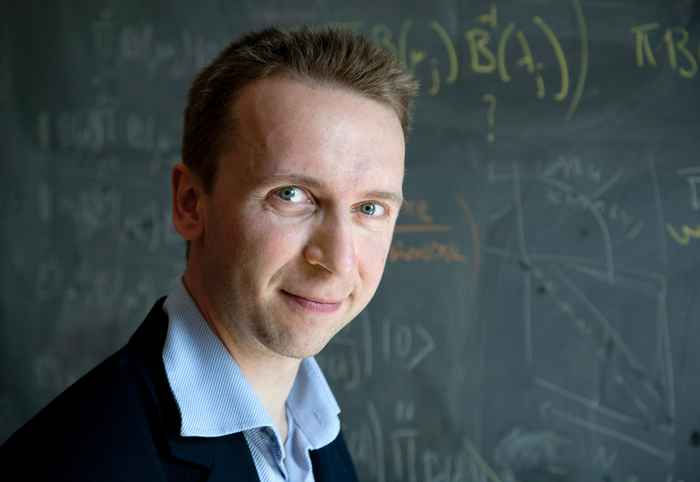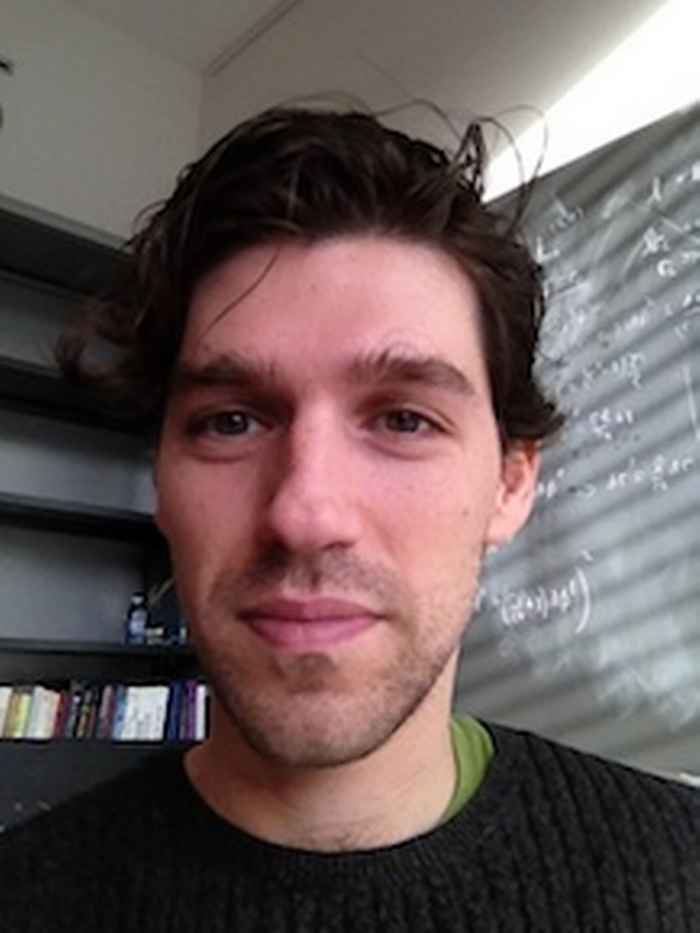Two FOM 'Projectruimte' grants for UvA physicists
23 June 2014

From Newton's cradle to Gibbs's grave
With the award, Jean-Sébastien Caux is able to hire a PhD student and a postdoc on his project entitled From Newton's cradle to Gibbs's grave. In addition, a 40 thousand euro material budget is available.
Project summary: In the now famous quantum Newton’s cradle experiment, a cloud of cold atoms is split in two parts with opposite momentum which thereafter periodically oscillate in a trap and collide with each other like billiard balls. This experiment demonstrated that many-body quantum systems in isolation from the environment can surprisingly fail to reach thermal equilibrium even after long time scales involving many collisions. The textbook way of thinking about ergodicity (namely that all possible microstates are explored under time evolution), equilibration and thermalization, synthesized in Gibbs's equilibrium thermodynamics, must thus be abandoned as far as many experimentally realizable, low-dimensional situations are concerned.
The aim of this research project is to improve our understanding of quantum many-body out-of-equilibrium dynamics, by exploiting a new approach for strongly-correlated systems in one dimension. Dubbed the ‘quench action’ method, this approach allows to obtain explicit results including but not limited to steady-state properties. This method has the potential to reveal the nature of the link between quantum dephasing and many-body relaxation processes. The researcher's intention is to turn this emerging method into a deeper theoretical understanding of the mechanisms behind many-body relaxation, open the way to their classification, and to translate theoretical findings into concrete experimental phenomenology.

Holography in the de Sitter static patch
Also Diego Hofman can carry out his project entitled 'Holography in the de Sitter static patch' with a PhD student and a postdoc, along with a 34 thousand euro material budget.
Project summary: In recent years holography has become the most important tool to understand the meaning of a quantum theory of gravity. This approach is based in the unexpected duality between gravitational theories and simpler quantum mechanical models formulated in lower dimensional holographic screens. While holography in anti-de Sitter (AdS) space-times is rather well understood at this stage, we currently lack a basic picture of what it means in non-AdS space times. This is a crucial question in quantum gravity for cosmological setups, as we seem to live in a universe with a positive cosmological constant that will be asymptotically de Sitter (dS) in the far future as was also in the far past during the inflationary period. Some universal properties of black hole horizons point towards the existence of a more general holographic principle. This fact is particularly relevant in the case of dS space-time. We, as local observers in dS, can only observe the region called the static patch, which is surrounded by a cosmological horizon. The properties of this horizon are very similar to those of black holes and have been successfully attacked through the use of holographic techniques.
In this project, Hofman and his team will investigate a concrete proposal to extend the holographic principle to the static patch of dS space-time. This line of research has acquired great importance given the recent results by the BICEP2 collaboration that suggests the importance of understanding gravity in the quantum regime during the inflationary period.
FOM 'projectruimte'
The Projectruimte is one of the grant instruments that FOM has to fund physics research. The Projectruimte makes it possible to realise small-scale projects of fundamental research with an innovative character and a demonstrable scientific, industrial or societal urgency.
On 10 June 2014, the Executive Board of the FOM Foundation decided to award five proposals in the FOM-Projectruimte. A total of 2.1 million euros has been awarded to the projects.